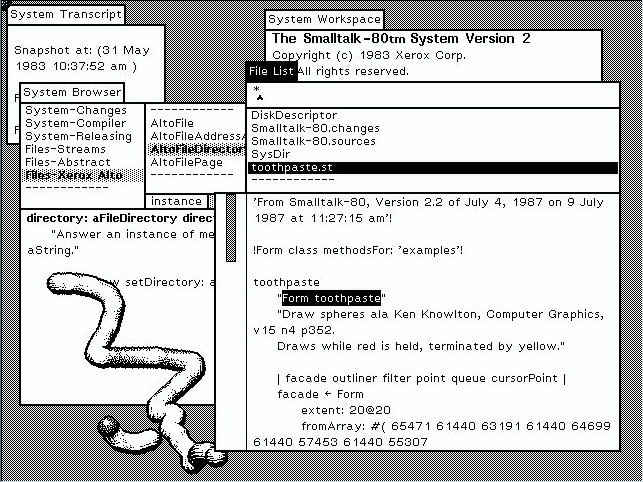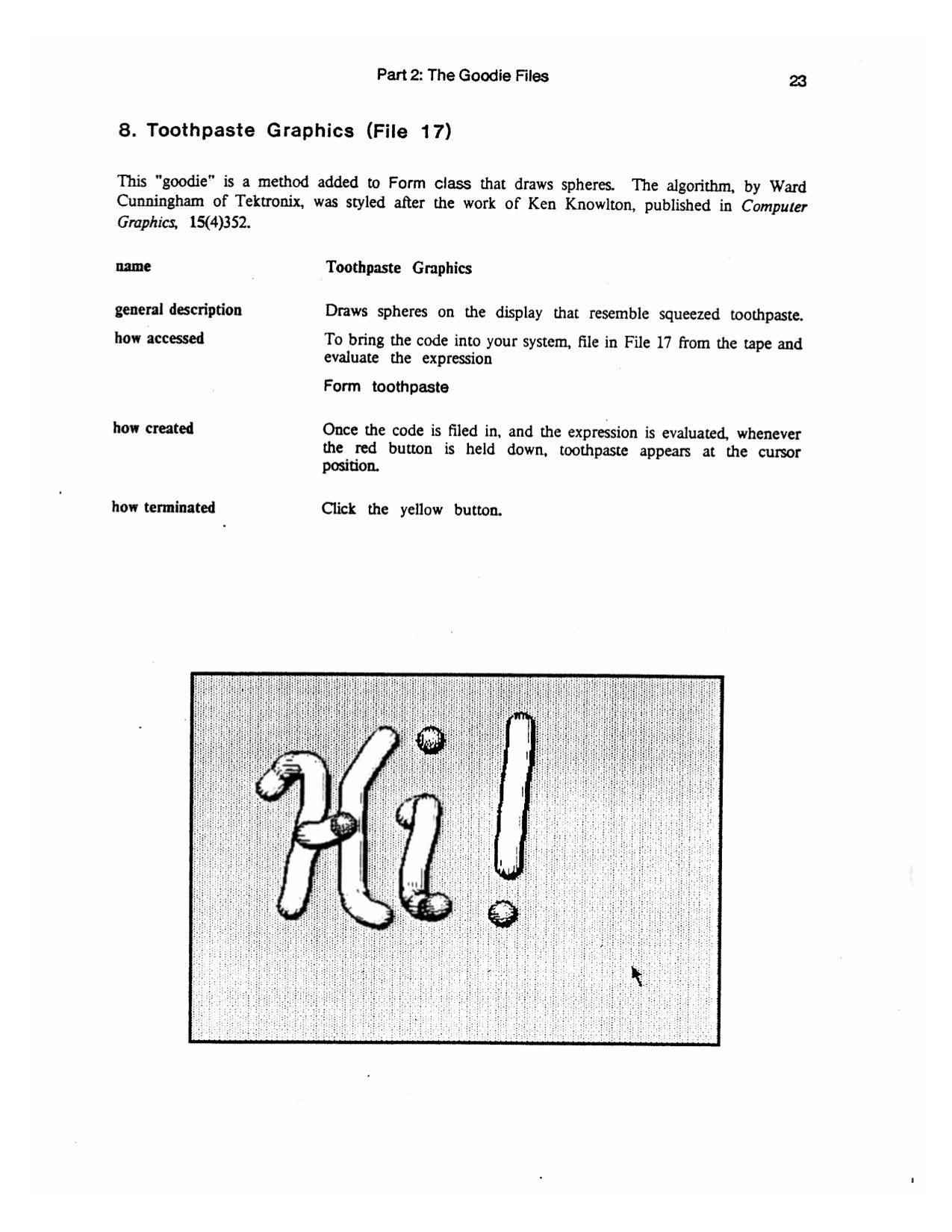A telephone render as spheres via SFERES.
Ken Knowlton described a clever mechanism for rendering three dimensional images on a bit-mapped display. He used as graphic primitives a dithered sphere and a slightly larger in diameter black disk called the outliner. He would model shapes as huge sets of spheres in three space, sort these into z-order, then draw them with rendering rules that caused the dither to merge into visually solid objects. wikipedia ![]()
The outliner was separated slightly from the dithered sphere such that all outliners for spheres clumped close together would be rendered before the spheres. This yielded a dark border around the clump as a whole. The outliner would interact with more widely spaced spheres in a way that enhanced dimensionality.

Toothpaste Graphics coded as a cursor-following doit. Screen shot from Ted Kaehler, Xerox PARC.
I replaced Ken's batch rendering with a cursor following paint algorithm. I retained the dithered sphere and black outliner. But rather than sorting, I simply queued the sphere rendering a dozen or so cursor samples behind the outliner rendering.
The paint appeared as if it were toothpaste. When I drew over previous painting the outliner separated the new paste from the old. However, a quick double back would have paste merge with adjacent spheres as if it had not yet "dried".
Dubbed Toothpaste Graphics, the algorithm coded up into a half-dozen lines of Smalltalk. This code got passed around and modified. Not everyone got the importance of merging the dither pattern properly or of delaying that merge well behind the outliner.
I developed the freehand technique of sketching a running figure, a demo that I repeated often.
I elaborated on the technique by building a stick model of the man in three space and rendering him after sorting only the end points of the sticks.
I created 3-D image pairs by rendering the stick figures from slightly different angles. Since the dithering was aligned with scene features, not display coordinates, the visual patterns fused to make a convincing image.
I created flip-book style movies by having my stick man cycle through motions and capturing arrays of rendered images to be played in loops. One loop had the poor guy endlessly trying to start a lawn mower.
I combined 3-D and motion to make 3-D movies. This turned out to be a disappointment. The dimensionality created by shading and motion left little room for improvement through stereo vision.
I always thought of this work as demo material and maybe a nod to the genius of Ken Knowlton. I was a little embarrassed to have Toothpaste Graphics cited as a contribution motivating my promotion to principle engineer.
"SFERES — System For Efficient Rendering of Ensembles of Spheres," Ken Knowlton, Computer Graphics 15, No. 1, pp. 48-71 (April 1981).
.
I happened to be looking through the historic Smalltalk-80: Virtual Image Version 2 guide and noticed that my own Toothpaste Graphics was included as a "Goodie File". enlarge ![]()

YOUTUBE 8yxCJfayW-8
Toothpaste Graphics from 0:30 to 1:00. source ![]()